When you’re driving and suddenly spot an orange sign, what’s the first thing that comes to mind?
Maybe that something has changed on the road, that there’s construction ahead, or that it’s time to slow down. And you’d be right. Orange road signs are the universal language that alerts drivers the road is no longer in its normal condition—it’s time to proceed with caution.
The value of a warning
It may seem like nothing more than brightly colored signs, but the reality is quite different. These warnings are carefully designed to give drivers advance notice and help prevent unexpected—and potentially dangerous—situations. A backhoe crossing the lane, loose gravel on the pavement, or a sudden lane reduction can pose serious risks if drivers aren’t warned ahead of time. This is where the color orange plays its key role: grabbing attention instantly and reminding us to drive with extra caution.
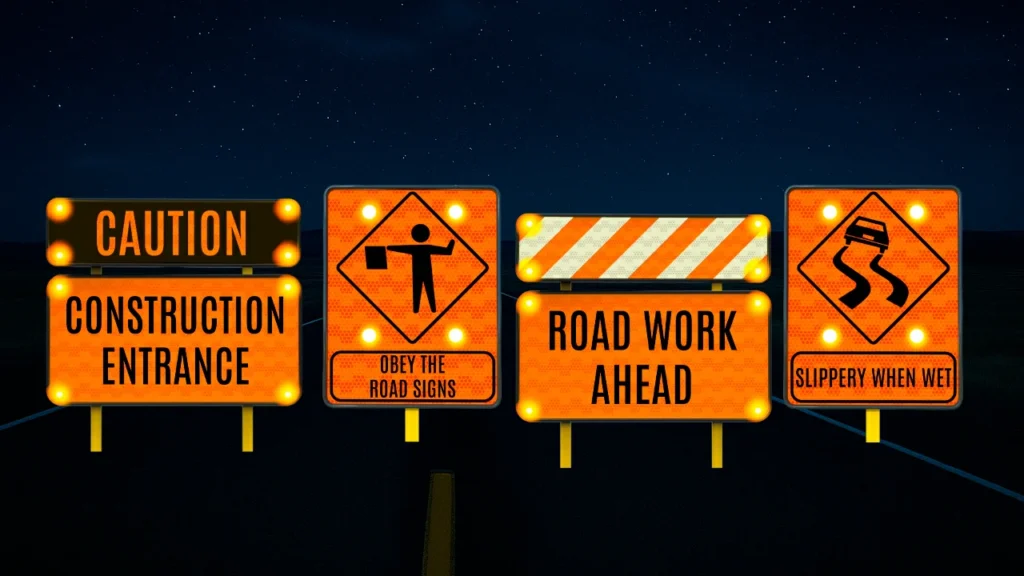
Why orange?
Fluorescent orange has a unique quality: our eyes detect it quickly—even in low light or from a distance. That’s exactly why it’s not used for other types of road signs. It’s reserved exclusively for construction zones, maintenance work, and temporary situations that demand maximum attention. In short, when we see orange signs, we know the road has changed—and that our driving needs to change with it.
High-visibility orange signs
The color itself is effective at catching attention—but in some environments, it’s not enough. That’s why many modern orange signs enhance their visibility with integrated LED lighting. These lights don’t require wiring or a conventional power source; they operate using a built-in solar panel, making them fully self-sufficient.
This means the sign charges during the day using solar energy and automatically activates at night or in low-light conditions to keep the warning clear and visible. The combination of fluorescent orange with LED lighting makes these signs an even more effective tool for road safety.
Four orange signs you should know
Beyond the color, each sign conveys a specific message. Here, we highlight four examples you may have seen on the road—but whose meanings are worth remembering:
🚧 Construction entrance sign
This sign indicates the start of a roadwork zone. Its primary purpose is to give drivers enough advance notice to slow down and exercise extra caution before entering the construction area. It is typically placed several meters ahead of the work site, following road safety regulations, and is complemented by additional progressive warnings. When equipped with LED lights visible both day and night, it becomes a hard-to-miss alert, significantly reducing the risk of accidents caused by unexpected hazards.
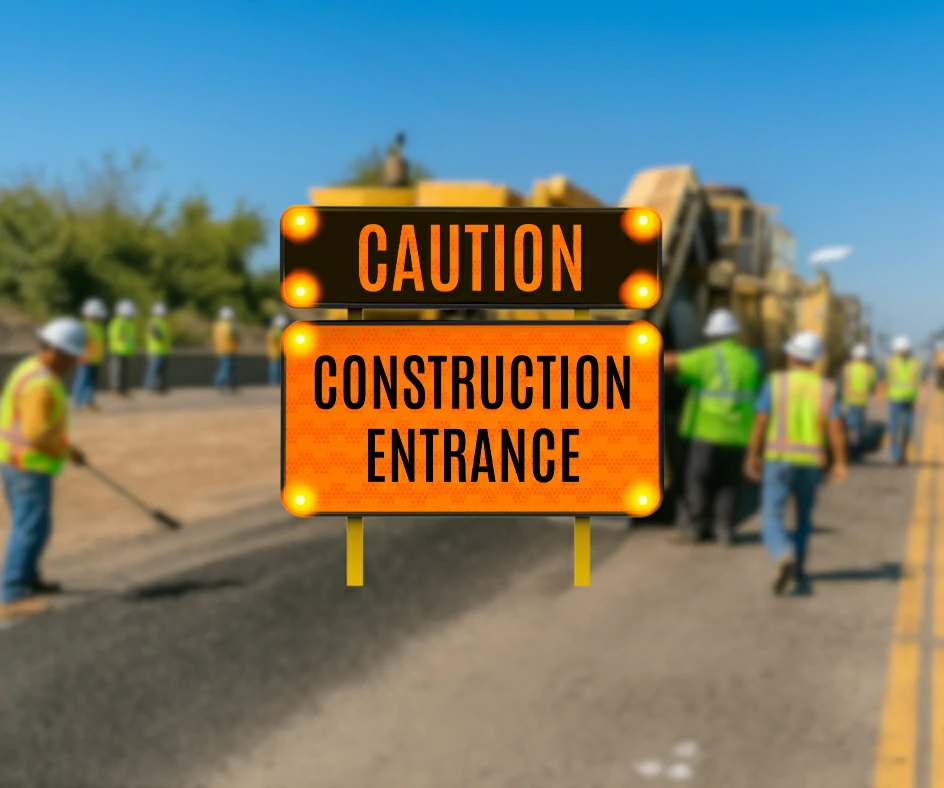
🚩 “Obey the road signs” signal (flagman)
The flagman is a key element in roadwork safety. This sign not only alerts drivers to the presence of personnel managing traffic but also establishes a direct line of communication: drivers must stay alert and obey their instructions. It’s commonly used in construction zones with narrowed lanes or temporary detours where traffic flow is intermittent. When enhanced with flashing lights powered by solar panels, it effectively captures attention in low-light conditions or during nighttime hours.
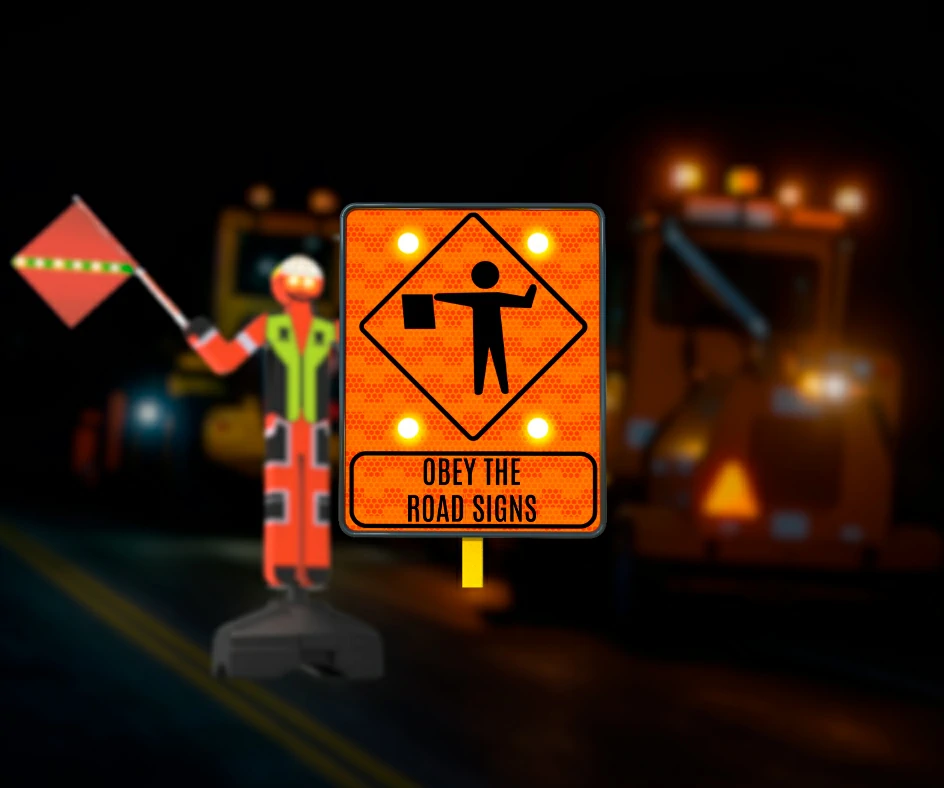
💧 Slippery when wet sign
Unlike the previous signs, this one isn’t limited to construction zones. Its purpose is to warn of an immediate slipping hazard caused by wet pavement, oil spills, loose gravel, or adverse weather conditions. It’s especially useful during rainy seasons or on roads with sharp curves, as it gives drivers the necessary time to reduce speed and maintain a safe following distance. As a result, its presence can make all the difference in preventing multi-vehicle accidents.
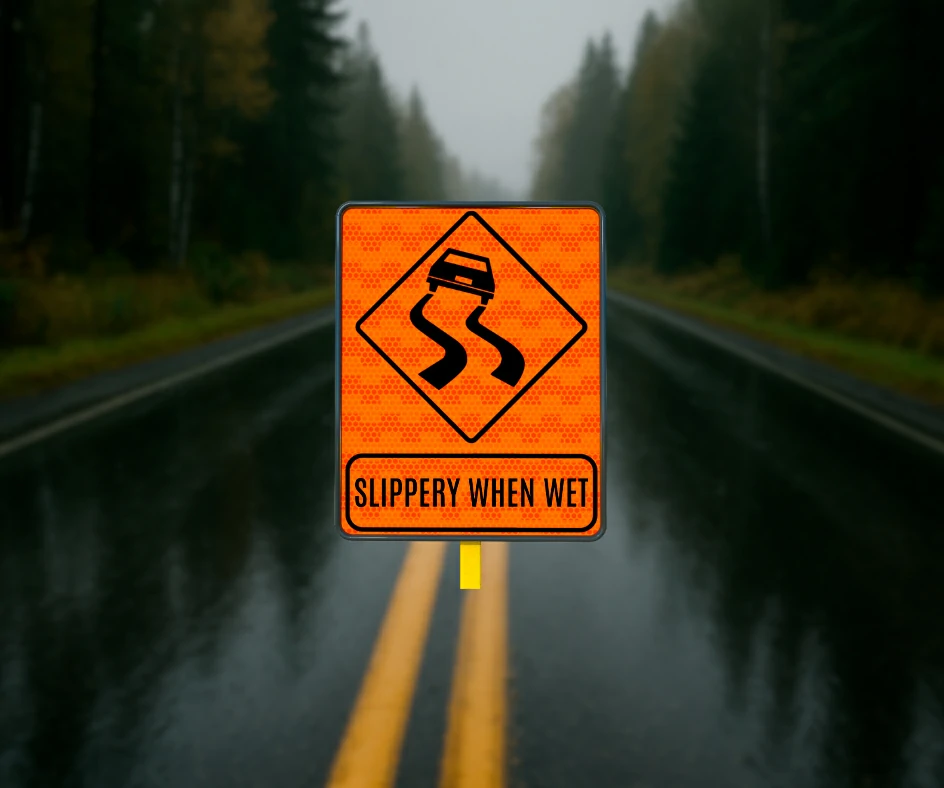
🏗️ Road work ahead sign
Its message is clear and unmistakable: the road is under construction, and drivers must proceed with utmost caution. This sign is used for long-term works where fixed obstacles such as heavy machinery, excavations, or materials that are on the roadway. The combination of orange and white stripes ensures immediate visibility, but the option to incorporate lighting systems makes it even more effective in urban areas with heavy traffic or rural roads with low ambient light.
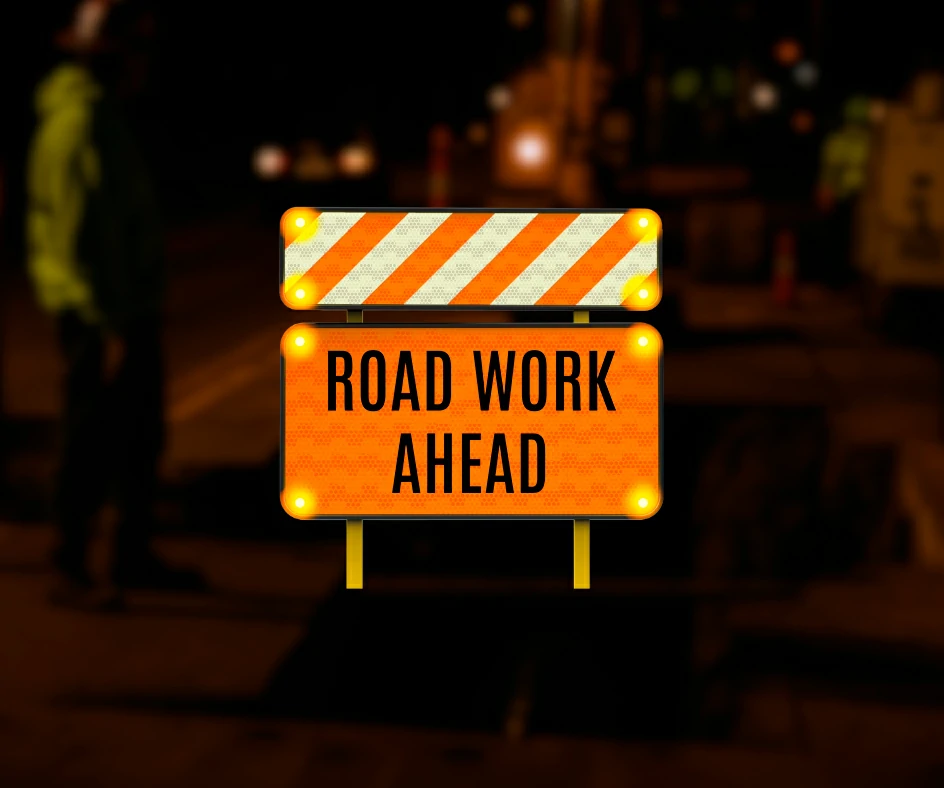
Orange signs: Safety in action
Orange signs don’t appear by accident. Each one indicates a change in road conditions and signals the need for increased caution. Whether alerting drivers to machinery, on-site personnel, hazardous surfaces, or mandatory detours, these signs work to anticipate what’s ahead and provide drivers with the critical time they need to respond safely.
More than just a simple sign, they are part of a system designed to protect both drivers and road workers. So, their effectiveness lies in the clarity of their message and their ability to alert exactly when it matters most.
To learn more about how they are applied in different scenarios, feel free to visit this complete section on construction signs. And if you want to broaden your understanding, this blog about the 4 signs you did not know is a valuable complement.
